The Campbell Clan are a Scottish highland clan with large landholdings in Argyll, and they were once one of the largest and most powerful highland clans.
Clans are Scottish kinship groups ruled by chiefs, with a shared identity and descent – although clan leadership was often hereditary, the clan itself was made up of unrelated families who accepted the leadership of the clan chief, and the territory they lived on.
The Campbells are traditionally believed to have originated from the Britons of Strathclyde, although the earliest historical record for the clan dates from the 13th century with a figure named ‘Gillespie’ or ‘Gille Escoib’.
The seat of the Campbells was likely initially Innis Chonnell castle on Loch Awe or Caisteal na Nigheann Ruaidh on Loch Avich.
The Campbells supported Robert the Bruce during the Wars of Scottish independence, fighting against the English and benefiting from land grants gifted to them by the new King Robert.
During the 15th century, the Campbells were loyal to the Scottish crown and quickly became the most powerful regional highland clan following the decline of clan MacDonald, with the first Lord Campbell being created in 1455.
The MacDonald chiefs had held the title ‘Lord of the Isles’ (with power over the Scottish Islands, Islay, and Argyll), but this was revoked in 1493 following the discovery of a MacDonald plot with the English to invade Scotland.
In the 17th century, Archibald Campbell, the 1st Marquis of Argyll, led Covenanter armies – the Covenanters were members of a political movement that championed the primacy of Presbyterian church leaders in religious affairs.
The Campbells were also involved in a series of feuds with other clans throughout their long history, including a long-running feud with clan MacDonald which possibly stemmed from their fall from power as Lords of the Isles in the 15th century, and the resulting supremacy of the Campbells.
In 1692 a force led by Robert Campbell of Glenlyon killed 38 members of Clan MacDonald of Glencoe as part of an attempt to suppress Jacobite uprisings, in what became known as the Glencoe Massacre.
The killings were likely tangled up within the long-running conflict between the two clans and were seen as particularly abhorrent as the Campbell troops had enjoyed the hospitality of their MacDonald hosts for a week before murdering them.
During the 18th century, the Campbells supported the British crown against the Jacobite rebels, who sought to restore the Stuart monarchy to Scotland.
Campbell Castles to Visit in Scotland
Thanks to their power and influence, the Campbells constructed and maintained a series of castles throughout their lands:
1. Inveraray Castle
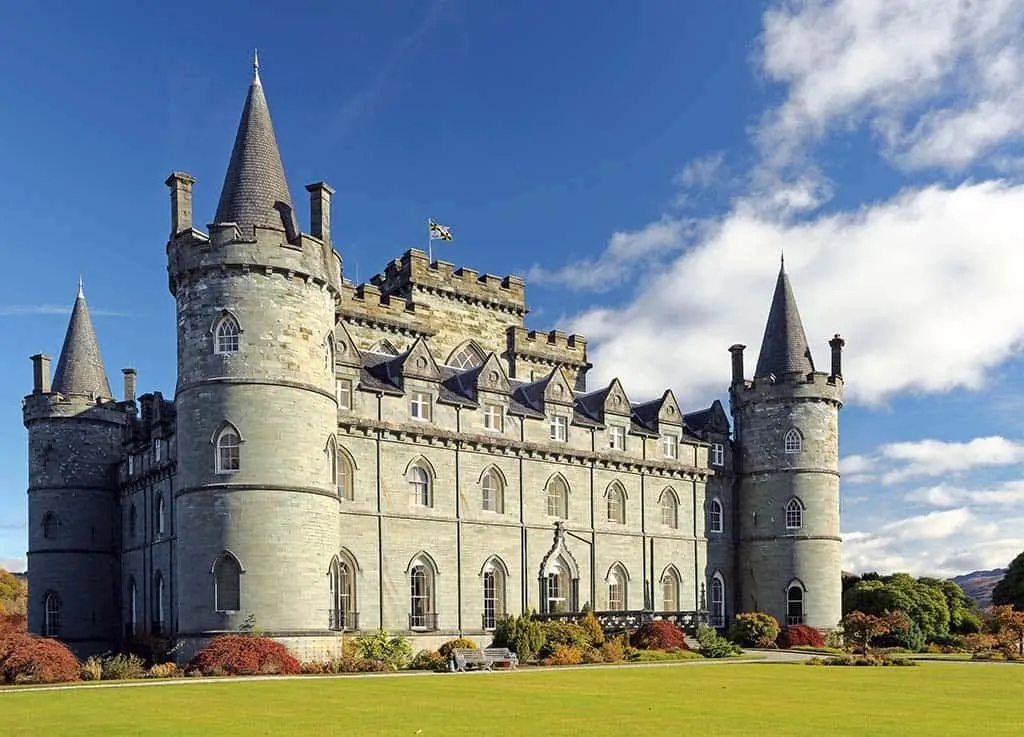
Inveraray castle has been the seat of the Dukes of Argyll (the chiefs of Clan Campbell) since the 18th Century. Built on the shores of Loch Fyne, the castle that stands there today is one of the earliest examples of Gothic Revival architecture and replaced an earlier 15th century castle.
Gothic revival, as the name suggests, was an architectural movement that sought to bring back medieval gothic building design – characterised by high perpendicular arches, tall thin windows, and vaulted ceilings – as opposed to the neoclassical style which was more popular at the time.
Originally all the roofs of Inveraray castle were flat and crenellated, with the pitched roof on the main building and the spires on the towers being added in later on. Inside the castle is decorated in the neoclassical style, with highly ornate rooms.
The current chief of Clan Campbell, the 13th Duke of Argyll, lives at Inveraray with his family and the building is open to visitors. Not only does the castle contain an extensive collection of weaponry, but it was also used to film an episode of Downton Abbey in 2012.
2. Castle Campbell
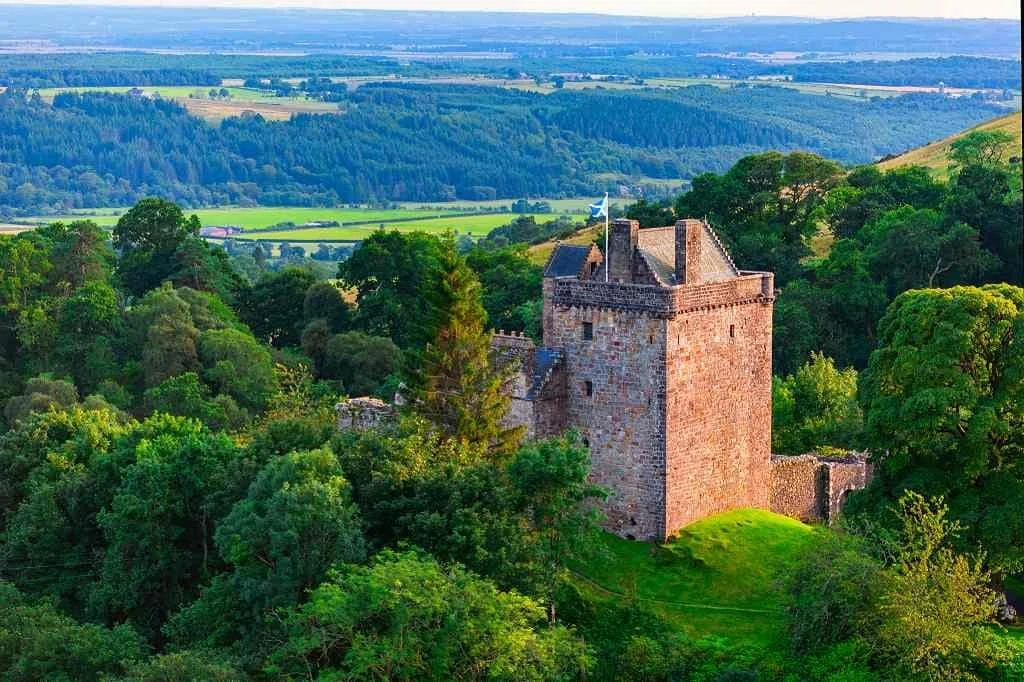
Castle Campbell was the lowland seat of the dukes of Argyll from the 15th – 19th century and is located near the town of Dollar in Clackmannanshire (Central Scotland).
The castle itself is situated on the raised ground which is flanked by two chasms or gorges – this position may have been created by the raising of a motte, giving the castle excellent defensive capabilities.
It likely also lent the castle its original name, which was ‘Castle Gloom’, probably deriving from the Scots Gaelic glom meaning ‘chasm’. The name was changed to Castle Campbell in 1490.
The tower was built by the Lord of Lorne and obtained by the 1st Lord of Argyll in 1460 by marriage, an acquisition that expanded the power of Clan Campbell westwards, giving them influence in central Scotland. Slowly the Campbells added further elements to the castle, including the courtyard buildings and gardens.
The fortification has an east and south range, which contained a hall, bed chambers and private lodgings. During the mid 17th century, Archibald Campbell (8th Duke of Argyll) was the leader of the Covenanters who opposed Charles I but supported the restoration of his son Charles II.
Campbell had to submit to Oliver Cromwell’s government in 1652, and in 1654 Royalist rebels loyal to Charles II attacked and burned Castle Campbell. Following this, the castle was essentially abandoned and sold multiple times before being given to the National Trust for Scotland in 1948.
3. Kilchurn Castle
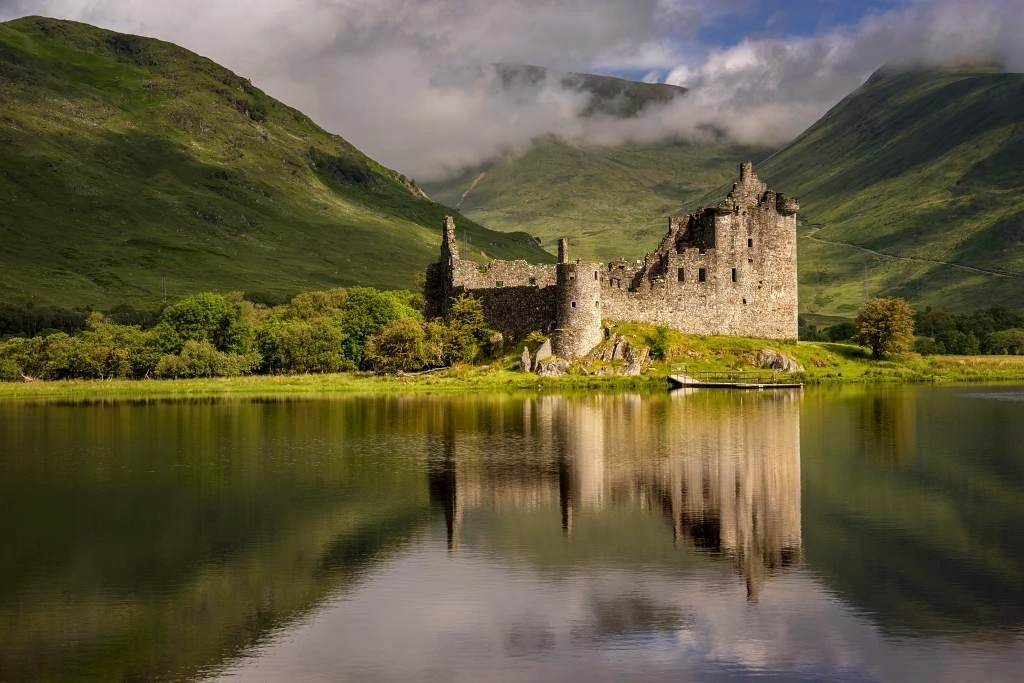
This ruined 15th century castle was built on a peninsula that projects into the north-eastern end of Loch Awe, the centre of Campbell power in Argyll. Kilchurn was the first of a series of castles constructed in the 15th and 16th centuries which marked the expansion of Campbell power and influence across the highlands of Scotland.
The castle itself was established by Sir Colin Campbell, who was one of the younger sons of Duncan Campbell, first lord Campbell. Sir Colin was granted land by his father and built the five-storey tower house and courtyard that the castle originally consisted of. Later on, a dining hall was added along the inside of the curtain wall by Sir Colin’ son, and in the 16th-century chambers were added to the north of the tower.
The parapet of the tower was also changed with the addition of circular corner turrets. In 1614 the south range was enlarged and in the south-eastern corner, a new range was added that included a chapel.
In the late 17th century the castle was converted into a modern barracks as part of the Jacobite uprisings and by 1740 the Campbells were attempting to sell Kilchurn as they had moved to the reconstructed Taymouth Castle. In 1760 the castle was ruined by a thunderstorm and was subsequently abandoned.
4. Castle Sween
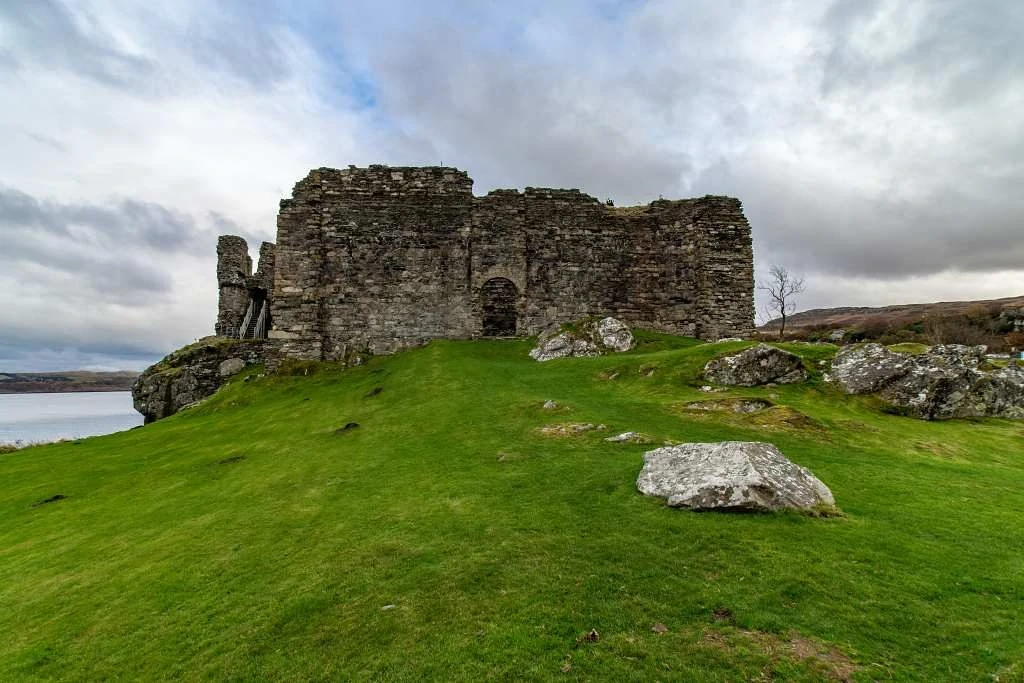
Thought to be one of the oldest stone castles in Scotland, Castle Sween stands on the eastern bank of Loch Sween in Knapdale, Argyll. Castle Sween was likely built in the late 11th century by a noble named Suibhne, whose uncle was king of Ulster and High King of Ireland – it seems that he lent his name to the fortification.
Up until the 13th century, the lands around the castle were ruled by the MacSweens, until they were ousted by the Menteiths. In 1310 King Edward II of England granted John MacSween the right to his ancestral lands if he could oust the Menteiths, and his failed attempt to do so may be the subject of the poem Dál chabhlaigh ar Chaistéal Suibhne.
Later in the 14th century, the castle passed into the possession of the MacDonalds, whose chiefs held the title ‘Lord of the Isles’. It was not until the decline of the MacDonalds in the 1490s that the Campbells came to possess Castle Sween.
The castle was eventually burnt and destroyed in 1647 by the Royalist Alasdair MacColla and an army of Irish Confederates as part of the Wars of the Three Kingdoms.
5. Cawdor Castle

Built in the 15th century, this tower house was originally owned by Clan Cawdor before coming into Campbell possession in the 16th century, where it remains to this day.
Situated close to Inverness, Cawdor’s license to crenellate dates from 1454, but it is likely that elements of the castle were constructed at an earlier time, as sections of the stonework would appear to be from the late 14th century.
Interestingly, the castle is built around a small holly tree – scientific testing of this tree suggests it died sometime around the year 1372. The castle itself was improved numerous times over the centuries, with the addition of north and west ranges, as well as a series of gardens (walled, flower and wild) which continue to attract visitors to this day. Cawdor was also used as a summer residence by the Campbell Earls during the 19th century.
6. Skipness Castle
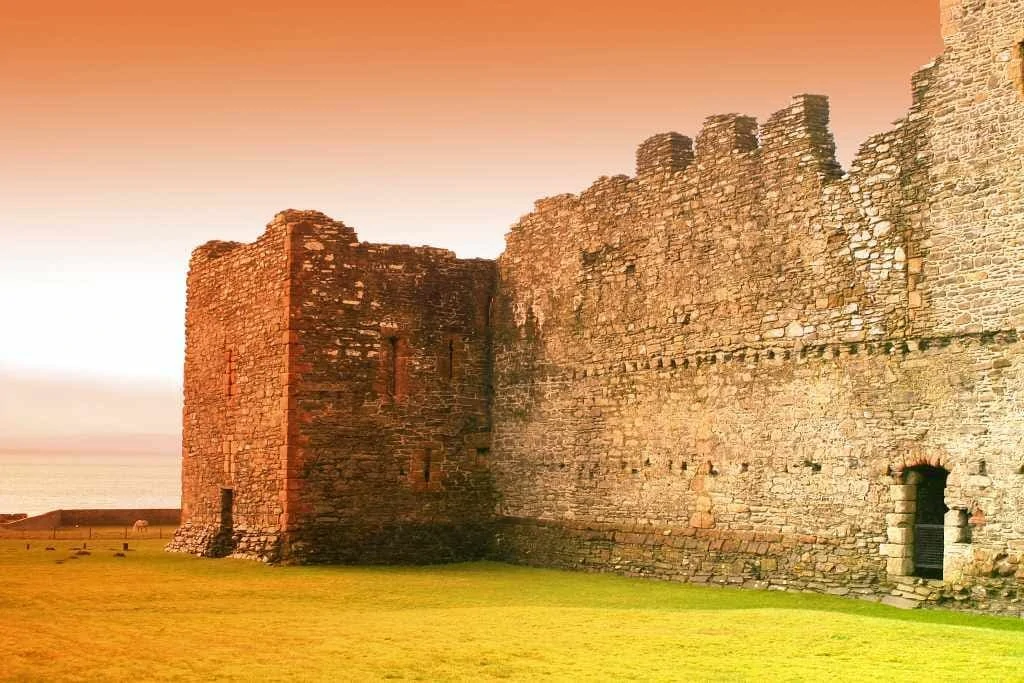
Skipness was another Campbell castle which was originally owned by the MacSween clan. Standing on the western edge of the Kintyre peninsula overlooking the Kilbrandon sound and the Isle of Arran, the castle is a 13th century construction consisting of a tower house, courtyard with curtain wall, and building ranges.
The wall has three ruined towers and the main entrance is a gatehouse that faces the sea with a portcullis and machicolations. The tower house that stands at Skipness today is a 16th-century building which incorporated the earlier 13th-century structure – it features a vaulted basement and a raised second-floor entrance which is reached by a stone staircase.
Like castle Sween, Skipness was held by the MacSweens until it passed into the hands of the Lords of the Isles, the MacDonald clan. When their land was seized by the crown in the 1490s, the castle passed to the Campbells. Skipness was unsuccessfully besieged by Alasdair MacColla in 1646, before finally being abandoned at the end of the 17th century.
A farm steading was established in the shell of the castle courtyard until it was later removed in 1898. The castle is also said to be haunted by a ghost known as the Green Lady of Skipness.
7. Taymouth Castle
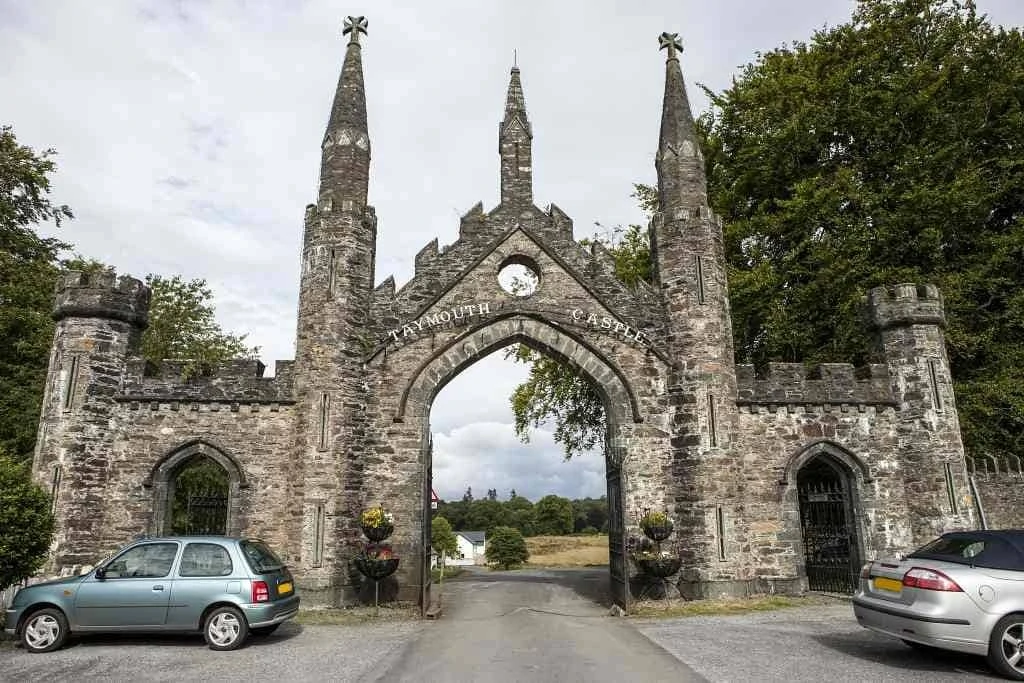
Taymouth was built to replace the older Balloch Castle, which stood on the same site and was constructed in 1552 to act as a centre of Campbell power. Taymouth is situated northeast of the village of Kenmore, in Perth and Kinross in the Highlands of Scotland – the castle sits within the grounds of a 450-acre estate which includes several follies, two temples, and a deer park.
Taymouth was built in neo-Gothic style, with lavish and highly impressive decoration. The interior of the castle is particularly outstanding: no expense was spared on its construction and the entire building is adorned with carvings, plasterwork and murals of the highest quality, representing extremely fine craftsmanship. There are also painted ceilings in many of the public rooms of the castle.
The castle was built between 1801 and 1842, but by 1920 it had become a hotel with a golf course in the deer park. During WW2 it was used as a hospital for Polish troops.
By 2005 the castle was in a poor state of repair and was sold for £12 million to a consortium who intended to convert it back into a luxury hotel. Progress has been extremely slow, and restoration efforts are still ongoing.
8. Dunstaffnage Castle

Built on a rocky promontory surrounded by three sides by sea at the entrance to Loch Etive, Dunstaffnage is a partially ruined 13th century castle. Built in this strategic position by the MacDougall Lords of Lorn, the castle passed into the hands of the Campbells in 1470 after it was granted to them by King James III.
Dunstaffnage may have been the location of a Dál Riatan (a Gaelic kingdom in the west of Scotland) stronghold as early as the 7th century. The castle saw action during the civil war and was burned by royalists in 1644, before being used to house government troops during the Jacobite uprisings of 1715 and 1745. The name derives from the Gaelic prefix dun meaning ‘fort’ and the Norse stafr-nis meaning ‘headland of the staff’.
Dunstaffnage is an irregular quadrangle measuring 35 by 30 metres, with three round towers. The walls are powerful, standing 18 metres tall and 3 metres thick and featured wall walks as well as arrowslits and gun loops.
The largest tower, which is a residential keep or donjon, is located on the north side of the castle – although it is now ruined it probably stood three or four stories high.
The current gatehouse is a later 15th-century addition built by the Campbells and looks much like a four-storey tower house with arrow slits and windows. Ranges were also added by the Campbells, but by the late 18th century the castle was decaying, and an accidental fire in 1810 saw the castle abandoned.
9. Innis Chonnel Castle

Innis Chonnel is a castle which stands on the tiny island of Innis Chonnel in Loch Awe, Argyll, Scotland. The castle may have been the earliest stronghold of Clan Campbell, although the structure that stands there now dates from the early 13th century.
The castle itself was built on a stone outcrop on the south-western end of the island and has four 8-feet-thick stone walls that form a square fortification. Within the walls was a courtyard where wooden structures were built to house the castle’s inhabitants, and square towers stood at the corners of the castle, although the castle is ruined today.
In the 15th century, the Campbells stopped using Innis Chonnel as a residence, although it still functioned as a prison. By the 19th century, it was in ruins.
10. Kilmartin Castle
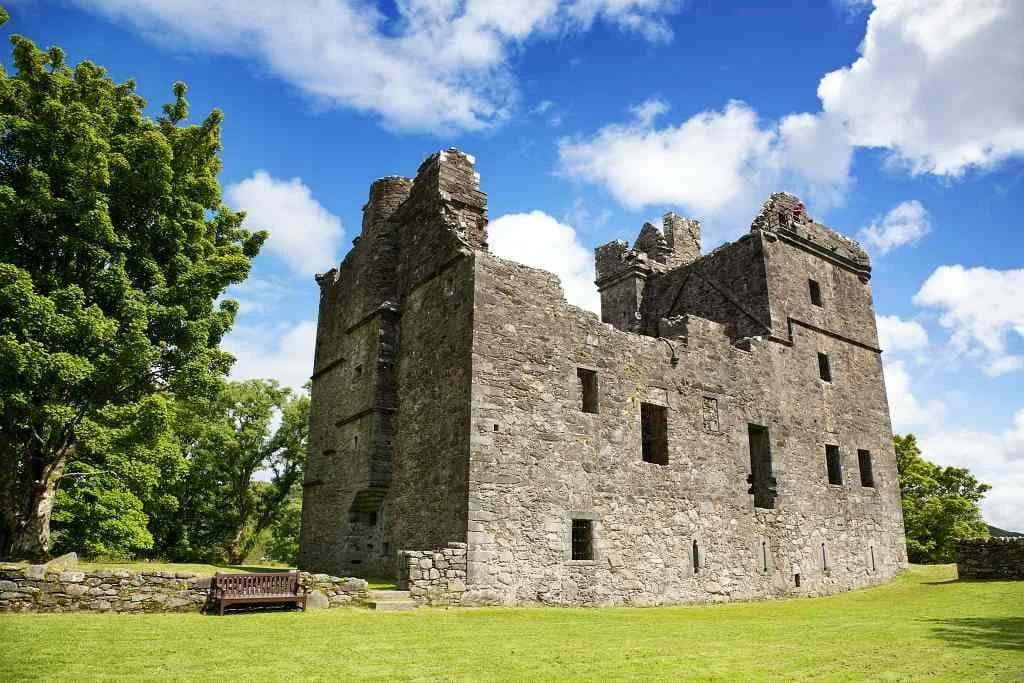
Originally built for Rector of Kilmartin Glen and later Bishop of the Isles, John Carswell, Kilmartin castle was later owned by the Campbell clan. Constructed in 1550, Kilmartin is a tower house formed of a central rectangular tower with three round towers incorporated into its structure. The castle fell into ruin and was eventually renovated, becoming a luxury bed and breakfast in the 1990s.
11. Torosay Castle
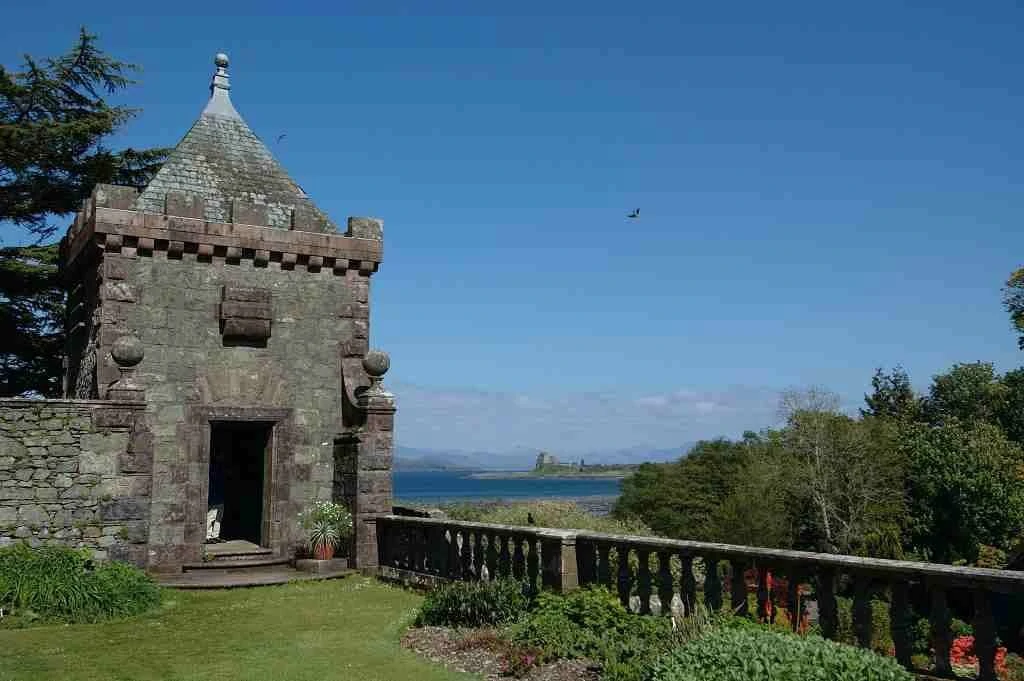
Torosay Castle is a large luxury house built in 1858 on the Isle of Mull by John Campbell of Possil. Torosay was constructed in the Scottish Baronial style, a type of late Gothic Revival characterised by elaborate rooflines featuring conical roofs, machicolations and crenellated battlements. The castle is noted for its elaborate terraced gardens, which are spread over 12 acres in the grounds of the building.
12. Finlarig Castle
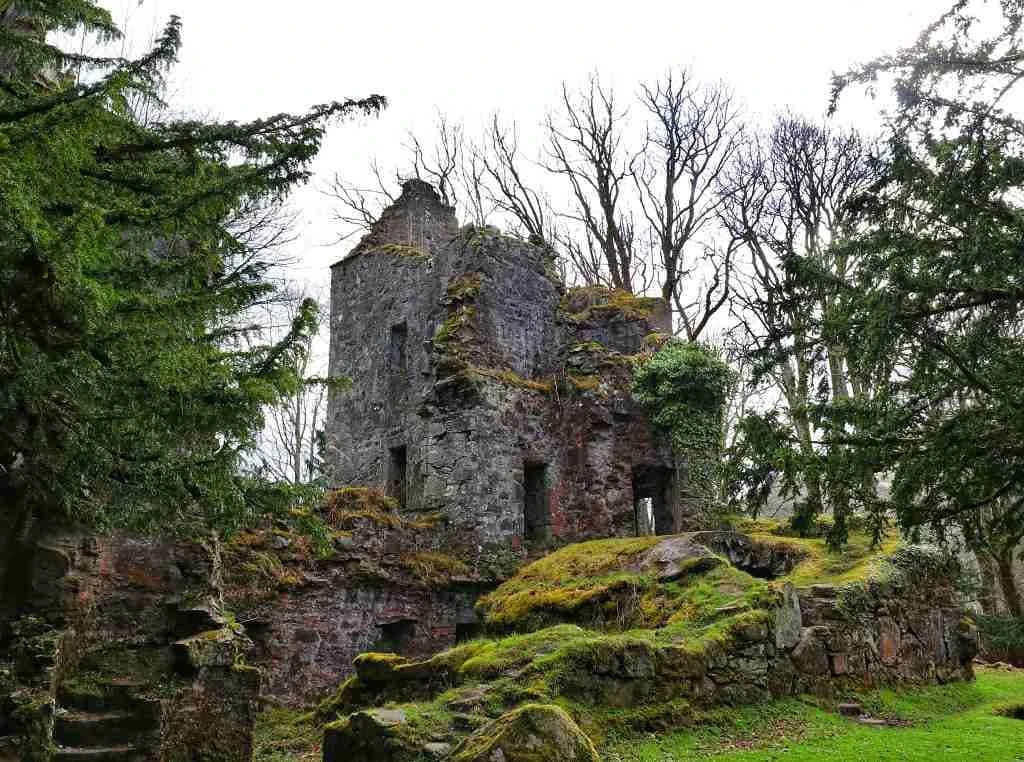
Standing on raised ground on a peninsula between the River Lochay and the River Tay, Finlarig was built in 1629 by Duncan Campbell of Glenorchy, one of the Campbells of Breadalbane. The castle is an L-shaped tower house with an outer enclosure that now stands in ruins.
Near the north wall of the castle is a stone-lined pit which was likely used for water storage – however, legends suggest that the pit was used for beheading prisoners.
The Scottish outlaw and folk hero Rob Roy was also said to have visited the castle in 1713. Nearby stands a mock-Tudor chapel which acts as the mausoleum of the Breadalbane’s, built in 1829 on the site of an earlier structure.

Thank you I loved the article.